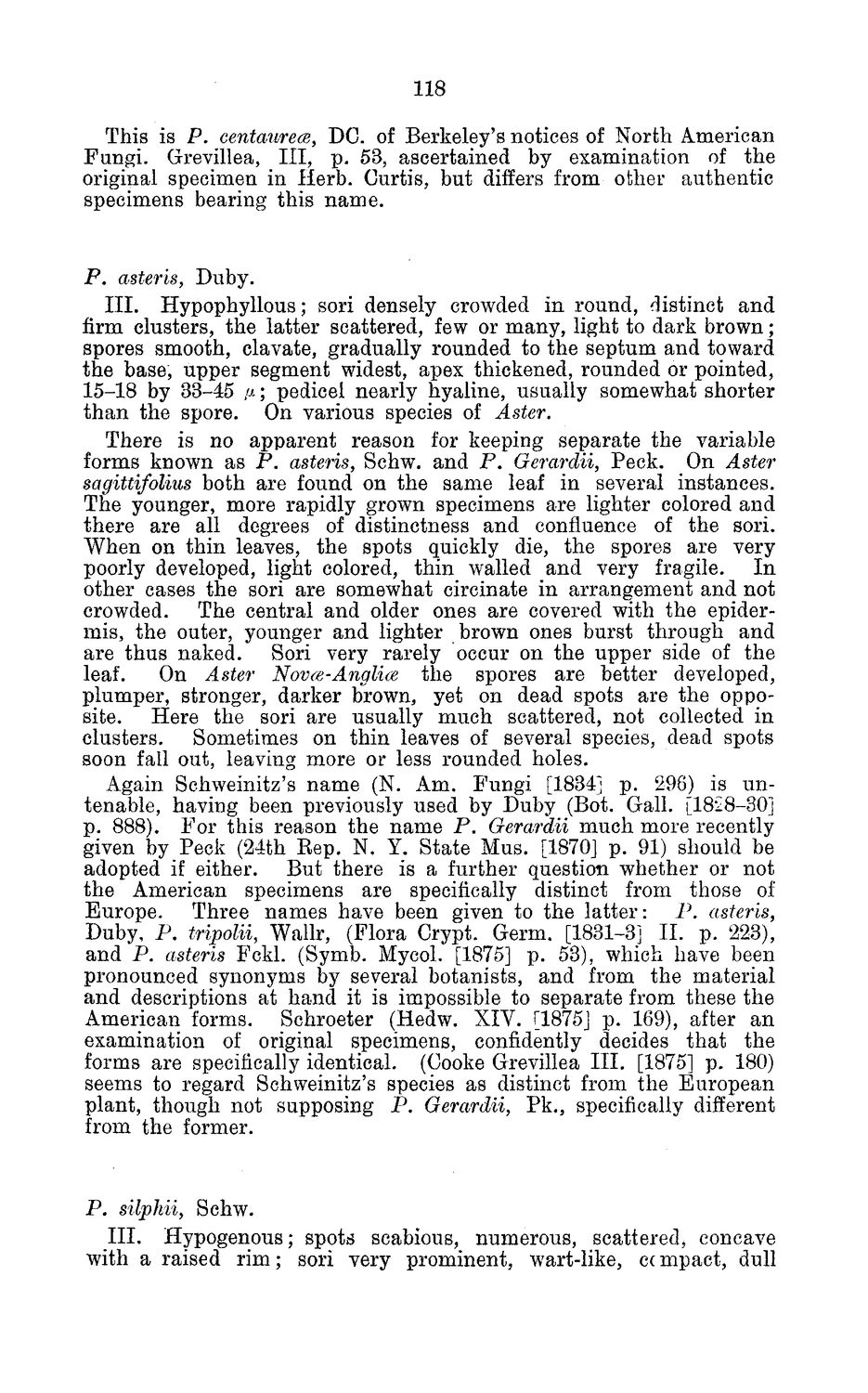| |
| |
Caption: Board of Trustees Minutes - 1884
This is a reduced-resolution page image for fast online browsing.

EXTRACTED TEXT FROM PAGE:
118 This is P . centaurece, DC. of Berkeley's notices of North American Fungi. Grevillea, III, p. 58, ascertained by examination of the original specimen in Herb. Curtis, but differs from other authentic specimens bearing this name. P . asteris, Duby. III. Hypophyllous; sori densely crowded in round, distinct and firm clusters, the latter scattered, few or many, light to dark brown; spores smooth, clavate, gradually rounded to the septum and toward the base, upper segment widest, apex thickened, rounded or pointed, 15-18 by 33-45 \x; pedicel nearly hyaline, usually somewhat shorter than the spore. On various species of Aster. There is no apparent reason for keeping separate the variable forms known as P . asteris, Schw. and P. Gerardii, Peck. On Aster sagittifolius both are found on the same leaf in several instances. The younger, more rapidly grown specimens are lighter colored and there are all degrees of distinctness and confluence of the sori. When on thin leaves, the spots quickly die, the spores are very poorly developed, light colored, thin walled and very fragile. In other cases the sori are somewhat circinate in arrangement and not crowded. The central and older ones are covered with the epidermis, the outer, younger and lighter brown ones burst through and are thus naked. Sori very rarely occur on the upper side of the leaf. On Aster Nova-Anglice the spores are better developed, plumper, stronger, darker brown, yet on dead spots are the opposite. Here the sori are usually much scattered, not collected in clusters. Sometimes on thin leaves of several species, dead spots soon fall out, leaving more or less rounded holes. Again Schweinitz's name (N. Am. Fungi [1834] p. 298) is untenable, having been previously used by Duby (Bot. Gall. [18*28-30] p. 888). For this reason the name P . Gerardii much more recently given by Peck (24th Bep. N. Y. State Mus. [1870] p. 91) should be adopted if either. But there is a further question whether or not the American specimens are specifically distinct from those of Europe. Three names have been given to the latter: P . asteris, Duby, P . tripolii, Wallr, (Flora Crypt. Germ. [1831-3] II. p. 223), and P . asteris Fckl. (Symb. Mycol. [1875] p. 53), which have been pronounced synonyms by several botanists, and from the material and descriptions at hand it is impossible to separate from these the American forms. Schroeter (Hedw. XIV. [1875] p. 169), after an examination of original specimens, confidently decides that the forms are specifically identical. (Cooke Grevillea III. [1875] p. 180) seems to regard Schweinitz's species as distinct from the European plant, though not supposing P . Gerardii, Pk., specifically different from the former. P . silphii, Schw. III. Hypogenous; spots scabious, numerous, scattered, concave with a raised rim; sori very prominent, wart-like, ccmpact, dull
| |